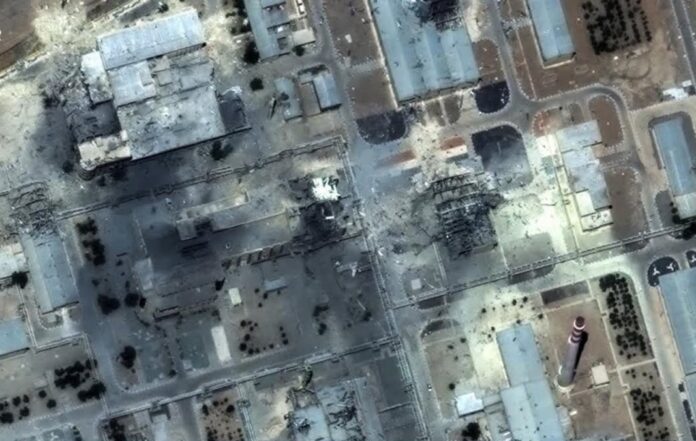Pentagon assessment says Trump’s Iran strike disrupted enrichment efforts, not core capacity
An initial Pentagon intelligence report has concluded that U.S. airstrikes against Iran’s nuclear sites delayed the country’s programme by only a few months, contradicting claims by President Donald Trump that the mission had “totally destroyed” Tehran’s atomic infrastructure.
According to three sources familiar with the classified assessment by the Defence Intelligence Agency (DIA), the strikes carried out by B-2 bombers and submarine-launched Tomahawk missiles on 13 June targeted three major nuclear facilities: Fordow, Natanz and Isfahan. The sites sustained damage, but core components, including centrifuges, remain largely intact.
Critically, the report reveals that Iran had anticipated the strikes and moved key uranium stockpiles before the bombardment. The enriched uranium, essential for potential nuclear weapons development, was reportedly unaffected.
“The airstrikes caused damage to the infrastructure but did not cripple Iran’s ability to restart enrichment,” said one official, who, like the others, spoke anonymously due to the sensitivity of the material. “The assessment is labelled ‘low confidence,’ meaning there’s still some uncertainty, but the conclusion is clear: months of disruption, not years.”
President Trump has repeatedly touted the mission as a major military success. On Monday, he wrote on social media: “The sites that we hit in Iran were totally destroyed, and everyone knows it.” However, experts and lawmakers say that assertion overstates the reality.
Nonproliferation specialists have long argued that Iran’s nuclear network is too expansive and hardened for any bombing campaign—no matter how precise—to fully dismantle. Much of Iran’s work is either buried deep underground or decentralised across dozens of facilities.
While the full impact of the strikes may not be known for weeks, the early assessment has already caused political ripples. On Tuesday, the Trump administration abruptly cancelled a classified briefing for members of Congress. Sources believe the postponement stemmed from concerns about political fallout rather than security issues.
“They don’t delay briefings that have good news,” said Representative Mike Quigley, a Democratic member of the House Intelligence Committee. “We’ve been warned for years that this kind of strike would only buy time, not end Iran’s programme.”
At the White House, press secretary Karoline Leavitt dismissed the DIA’s findings. In a post on X, she called the report “flat-out wrong” and labelled the leaker a “low-level loser” from the intelligence community. “Everyone knows what happens when you drop fourteen 30,000-pound bombs perfectly on their targets: total obliteration,” she claimed.
Meanwhile, a fragile ceasefire between Israel and Iran, brokered by Trump and Qatari officials, held into its second day. Both Israeli Prime Minister Benjamin Netanyahu and Iranian President Masoud Pezeshkian have claimed strategic victory after 12 days of cross-border fighting.
During the conflict, Iran retaliated for the U.S. strikes by launching missiles at the American airbase in Qatar. Though damage was minimal and no casualties reported, the incident added to tensions surrounding the military campaign’s effectiveness.
Analysts warn that despite the temporary setback, Iran could restore most of its capabilities within months. One source noted that while parts of the Fordow and Natanz facilities were hit, many centrifuges and control systems may have survived or were relocated beforehand.
The full implications of the attack and intelligence findings are likely to be debated for months to come, especially as Trump continues to campaign on what he has described as a decisive foreign policy victory.
